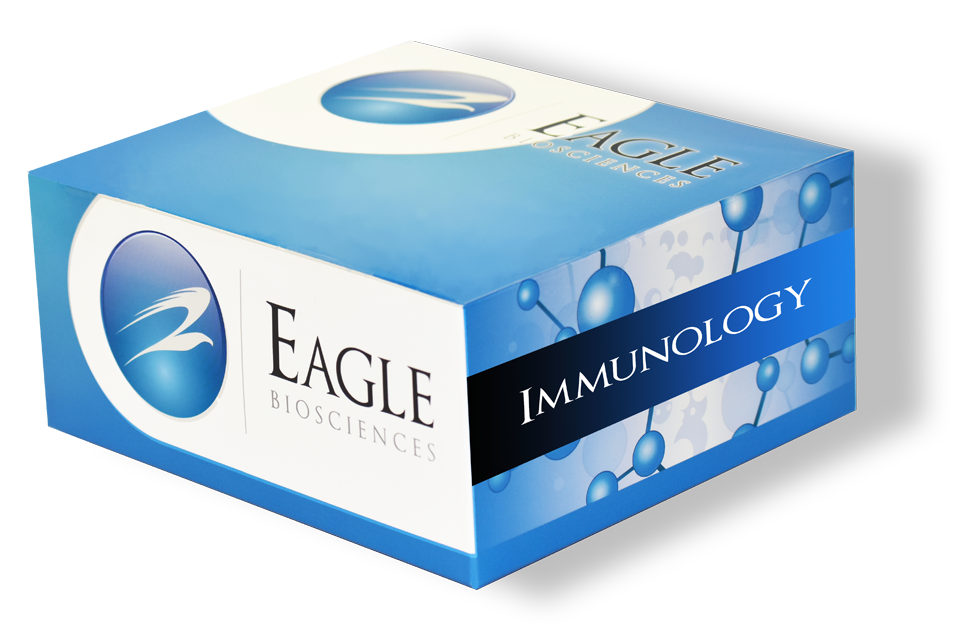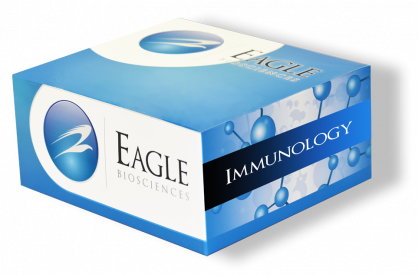Dengue Virus NS1 ELISA
The Dengue Virus NS1 ELISA is For Research Use Only
Size: 1×96 wells
Sensitivity: 0.5 ng/ml
Dynamic Range: 1.56-100 µg/ml
Incubation Time: 2.5 hours
Sample Type: Serum, Plasma, Cell Culture Supernatants
Sample Size: 100 µL
Alternative Names: Dengue virus NS1 protein, Dengue Virus Non-structural protein 1, DENV NS1
Assay Background
Dengue virus NS1 protein is a nonstructural protein which could be secreted and have been developed as diagnostic biomarker for early detection. There are several forms of NS1 including monomer, dimer, and hexamer during infection. Dimeric NS1 can be anchored to cell membranes with glycosyl-phosphatidylinositol (GPI). Hexameric NS1 can be secreted and detected in patients’ blood samples (up to 50 μg/mL) or infected cell supernatants (various from ng/mL to μg/mL depend on serotypes and strains). Studies have shown that NS1 could interfere complement activity and prothrombin activation. In addition, NS1 could elicit antibodies which cross-react with host antigens including coagulation factors and molecules expressed in endothelial cells and platelets through molecular mimic. Dengue virus (DENV) non-structural protein 1 (NS1) is involved in virus replication and regulation of the innate immune response. Soluble and membrane-associated NS1 may activate human complement and induce host vascular leakage. This effect might explain the clinical manifestations of dengue hemorrhagic fever and dengue shock syndrome (By similarity).
Related Products
Dengue Virus IgM Antibody ELISA
Dengue Virus IgG Antibody ELISA
Assay Principle
This assay employs the sandwich enzyme immunoassay technique for the detection of Dengue virus NS1 in serum, plasma and cell culture supernatant samples. An antibody specific for DENV NS1 has been pre-coated onto a microtiter plate. Standards or samples are pipetted into the wells and any DENV NS1 present is bound on the plate. After washing away any unbound substances, a Horseradish Peroxidase (HRP) conjugated primary antibody binds to DENV NS1 is added to each well and incubates. After washing away any unbound antibody-enzyme reagent, a substrate solution (TMB) is added to the wells and color develops in proportion to the amount of total DENV NS1 bound in the initial step. The color development is stopped by the addition of acid and the intensity of the color is measured at a wavelength of 450nm ±2nm. The concentration of total DENV NS1 in the sample is then determined by comparing the O.D of samples to the standard curve.
Assay Procedure
1. Remove excess microplate strips from the plate frame, return them to the foil pouch containing the desiccant pack, and reseal it.
2. Add 100 µl of standards, samples and zero controls into appropriate wells.
3. Add 100 µl of Assay buffer into all wells immediately. Mix thoroughly by gently shaking or tapping the plate. Cover the plate and incubate for 1 hour at 37°C.
4. Aspirate each well and wash, repeating the process 2 times for a total 3 washes. Wash by filling each well with 1X wash buffer (300 μl) using a squirt bottle, manifold dispenser, or autowasher. Complete removal of liquid at each is essential to good performance. After the last wash, remove any remaining buffer by aspirating, decanting or blotting against clean paper towels.
5. Add 100 µl 1X HRP-antibody conjugate into each well. Mix thoroughly by gently shaking or tapping the plate. Cover wells and incubate for 1 hour at 37°C.
6. Aspirate each well and wash as step 4.
7. Add 100 μl of TMB substrate to each well. Incubate for 10 minutes at 37°C in dark. Substrate will change from colorless to different strengths of blue.
8. Add 50 μl of Stop solution to each well. The color of the solution should change from blue to yellow. Mix thoroughly by gently shaking the plate.
9. Read the OD with a microplate reader at 450 nm immediately.
Package Inserts
Please note: All documents above are for reference use only and should not be used in place of the documents included with this physical product. If digital copies are needed, please contact us.


